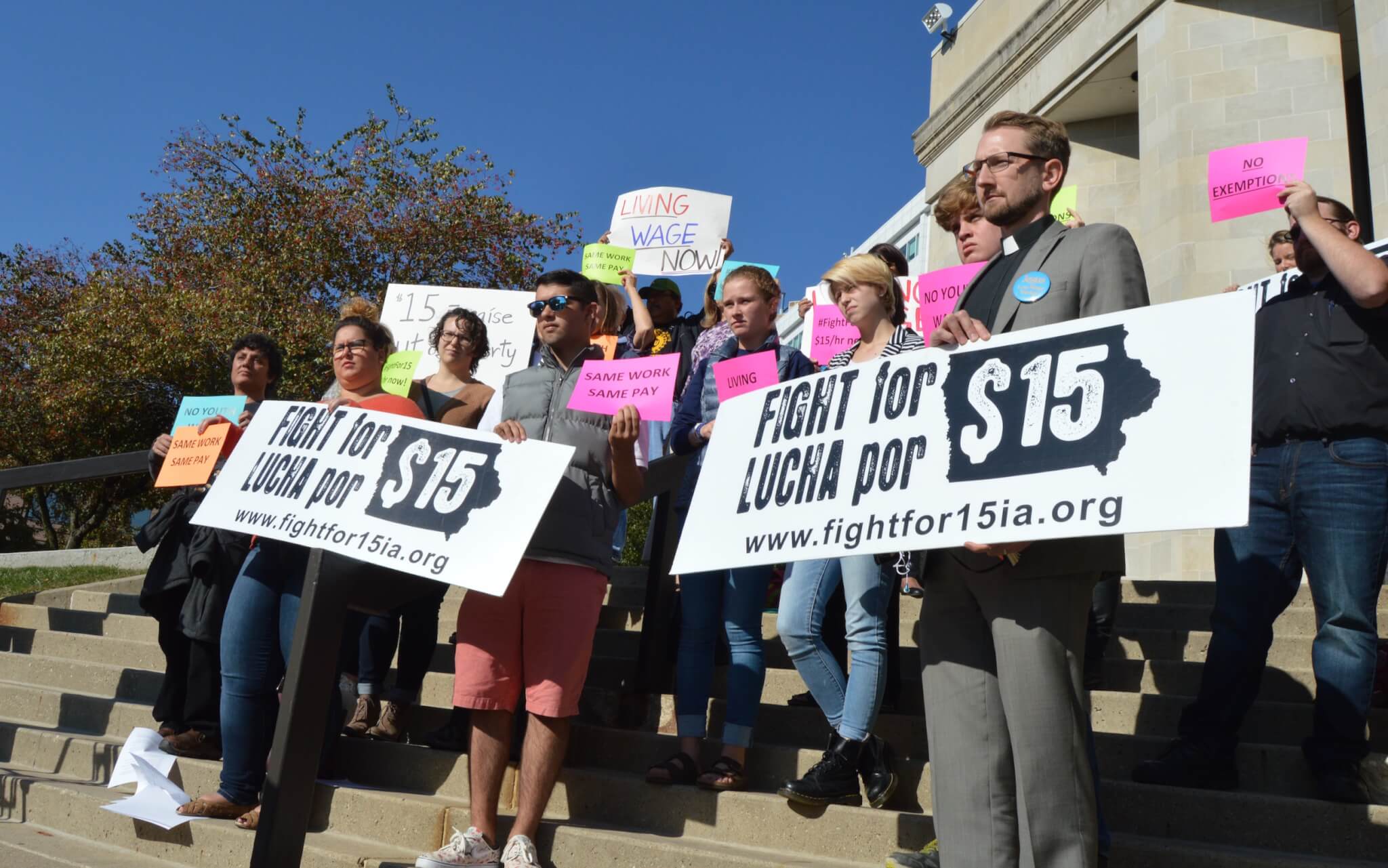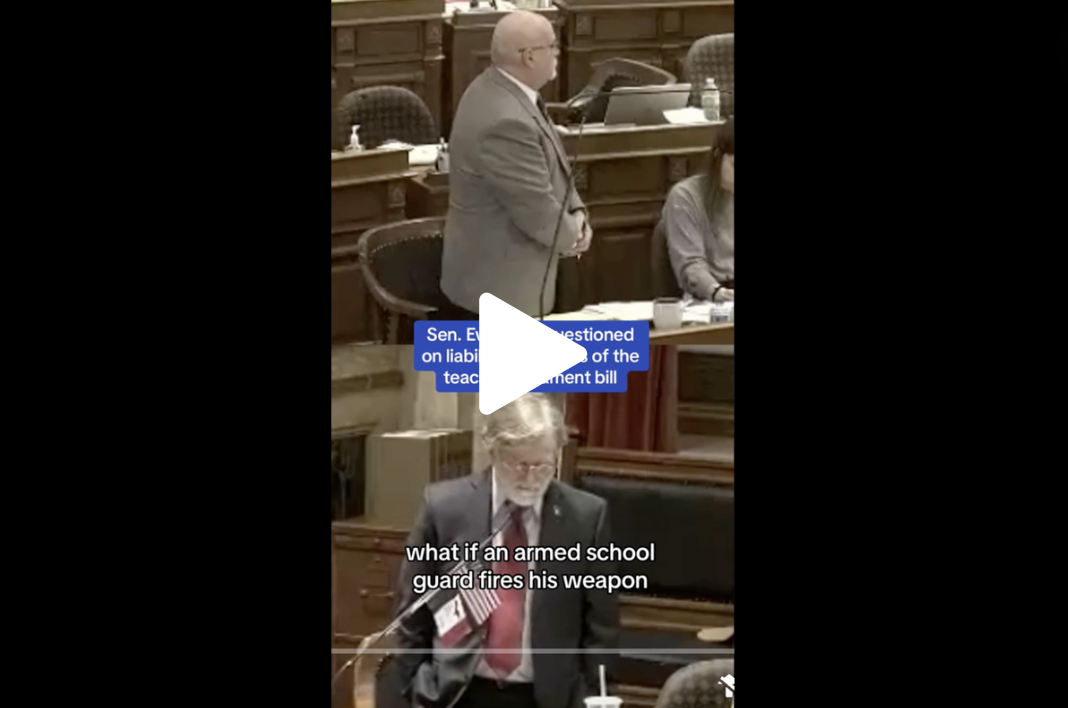
Why is all the attention focused on raising Iowa’s minimum wage of $7.25 per hour and no discussion on raising the tipped sub-minimum wage of $4.35 per hour? In Iowa, an employee that receives more than $30 per month in tips is considered a “tipped employee” and can be paid at the lower $4.35 minimum rate. Many workers in food service and hospitality receive tips including those who wait tables or serve and mix drinks.
Iowa law mandates that the tipped wage be set at 60% of the minimum wage; therefore, Iowa’s sub-minimum tipped wage is pegged at $4.35. Iowa employers are only required to pay their tipped workers $4.35 per hour as long as their employees get enough in tips ($2.90) to equal $7.25 total. If tipped employees don’t receive at least the total of $2.90 in tips per hour, employers must make up the difference to the employee. Basically, the Iowa public is subsidizing the employer by paying tipped employees a portion of their income.
The logic behind the lower minimum wage rate for tipped workers is the belief that they will make up the difference in income by receiving customer tips. For high end and more expensive restaurants tipped employees may do quite well but those working for more modest restaurants and cafes tipped employees aren’t well paid.
Workers that rely on tips make up 60% of the food service industry and two thirds of those workers are women. According to the Bureau of Labor Statistics, the median wage for waiters and waitresses in Iowa is $8.70 and $8.66 for bartenders. The poverty rate for tipped workers is twice that of non-tipped workers. Tipped workers in Iowa are among the nation’s lowest-paid. The average annual wage in Iowa for a waiter or waitress is calculated at slightly more than $19,000.
Raising the minimum wage in Iowa has become a major campaign issue for nearly every Democrat running for office. There is general agreement in the party that raising the minimum wage from the current $7.25 per hour is essential. There isn’t total agreement on the correct level, although $15.00 per hour is generally seen as a near term goal. If the tipped sub-minimum wage remained at 60% of the minimum wage of $15, the tipped wage would be set at $9.
In 2014, former Senator Tom Harkin proposed increasing the federal minimum wage to $10.10 and indexing it to inflation. He proposed raising the tipped wage to 70% of that number. That would have set the tipped wage at $7.07. Senator Harkin understood the importance of increasing both the minimum wage and increasing the sub-minimum tipped wage percentage as well.
Increasing the tipped sub-minimum wage percentage in tandem with increasing the minimum wage would certainly benefit tipped workers. However, many states are moving to eliminate the two-step wage approach altogether. Eight states have eliminated the sub-minimum wage completely. They have just one minimum wage for both tipped and non-tipped workers. California has the highest single minimum wage of $11 for both tipped and non-tipped workers.
Until Democrats can gain control of state government, increasing minimum wages in Iowa is pure talk. Four counties in Iowa raised the local county minimum wage and last year the Republican-controlled legislature nixed their increases. Democratic Supervisors in Polk County voted the largest increase of the four counties with a goal of $10.75 by 2019.
Getting Republicans at the national level to raise the national minimum wage is highly unlikely as well. While President Trump ran on a campaign promising to help working Americans, his policies have done just the opposite.
by Rick Smith
Posted 5/18/18
Politics

It’s official: Your boss has to give you time off to recover from childbirth or get an abortion
Originally published by The 19th In what could be a groundbreaking shift in American workplaces, most employees across the country will now have...

Trump says he’s pro-worker. His record says otherwise.
During his time on the campaign trail, Donald Trump has sought to refashion his record and image as being a pro-worker candidate—one that wants to...
Local News

No more Kum & Go? New owner Maverik of Utah retiring famous brand
Will Kum & Go have come and gone by next year? One new report claims that's the plan by the store's new owners. The Iowa-based convenience store...

Here’s a recap of the biggest headlines Iowa celebs made In 2023
For these famous Iowans, 2023 was a year of controversy, career highlights, and full-circle moments. Here’s how 2023 went for the following Iowans:...






